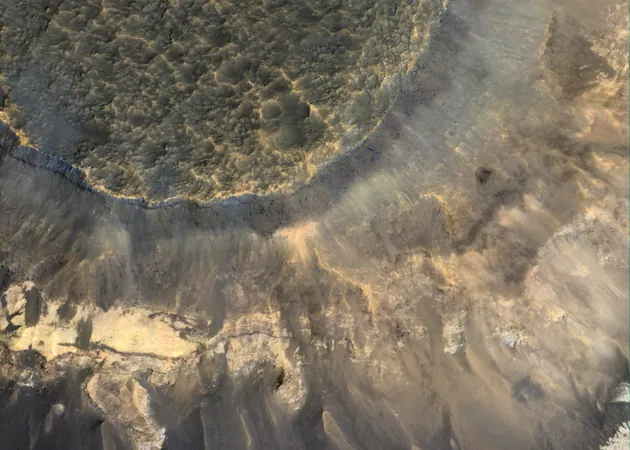
Ancient Clay Layers on Mars: A Potential Cradle for Life!
2025-06-16
Author: Wei
Unveiling Mars' Ancient Secrets
Mars, a planet of intrigue, is adorned with thick layers of clay that stretch for hundreds of feet deep. These fascinating formations, dependent on the presence of water, have captured the attention of scientists eager to uncover signs of ancient life on the Red Planet.
A New Study Revolutionizes Our Understanding
In a groundbreaking study published in Nature Astronomy, researchers from The University of Texas at Austin unearthed remarkable insights into these clay terrains. Most of these layers are thought to have formed near ancient bodies of standing water, creating a crucial environment that may have nurtured life billions of years ago.
Study lead author Rhianna Moore noted, "These areas possess ample water and are characterized by very stable terrain, minimizing disruption to potentially habitable environments. This stability could sustain favorable conditions for life over extended periods."
A Window into Mars' Wet Past
This study, part of the UT Center for Planetary Systems Habitability, highlights how the thick clay deposits could hint at a once-imbalanced water and carbon cycle on ancient Mars. Such imbalances might account for the planet's apparent lack of carbonate rocks, commonly found on Earth.
Once a wet world teeming with lakes and rivers, Mars has since transformed, leaving behind geological formations reminiscent of its fluid past. Moore's analysis of 150 clay deposits, identified by NASA's Mars Reconnaissance Orbiter, unveiled their unique topographical features and proximity to former water bodies.
Clay Deposits: A Clue to Stability
Most of the clay deposits were discovered at lower elevations, adjacent to ancient lake beds but far from the vigorous valley networks, where water flowed more aggressively. This balance of chemical weathering facilitated the preservation of clay through the ages.
Co-author Tim Goudge emphasized, "On Earth, the thickest clay mineral sequences emerge in humid environments with minimal erosion. Our findings suggest similar conditions prevailed on Mars, revealing its historical potential for sustaining life."
Mars vs. Earth: An Intriguing Contrast
However, Mars’ ancient landscape starkly contrasted with modern Earth. Earth’s shifting tectonic plates continually unveil fresh rock that reacts with water and atmospheric CO2, vital for climate regulation. In contrast, Mars, devoid of tectonic activity, likely allowed CO2 from volcanic eruptions to accumulate in the atmosphere, creating a warmer and wetter environment which significantly contributed to clay formation.
Curiously, the lack of new rock may have stifled the formation of carbonate rocks. Instead of allowing carbon-rich byproducts to mingle with Martian geology, ongoing clay formation trapped water and isolated those chemicals.
Unlocking Mars' Mysteries
As Moore aptly put it, "This interplay of factors plays a substantial role in the puzzling absence of predicted carbonates on Mars." Funded by NASA and the Canadian Institute for Advanced Research, this research not only enhances our understanding of Mars' past but also reignites the tantalizing possibility of ancient life on our neighboring planet.





 Brasil (PT)
Brasil (PT)
 Canada (EN)
Canada (EN)
 Chile (ES)
Chile (ES)
 Česko (CS)
Česko (CS)
 대한민국 (KO)
대한민국 (KO)
 España (ES)
España (ES)
 France (FR)
France (FR)
 Hong Kong (EN)
Hong Kong (EN)
 Italia (IT)
Italia (IT)
 日本 (JA)
日本 (JA)
 Magyarország (HU)
Magyarország (HU)
 Norge (NO)
Norge (NO)
 Polska (PL)
Polska (PL)
 Schweiz (DE)
Schweiz (DE)
 Singapore (EN)
Singapore (EN)
 Sverige (SV)
Sverige (SV)
 Suomi (FI)
Suomi (FI)
 Türkiye (TR)
Türkiye (TR)
 الإمارات العربية المتحدة (AR)
الإمارات العربية المتحدة (AR)